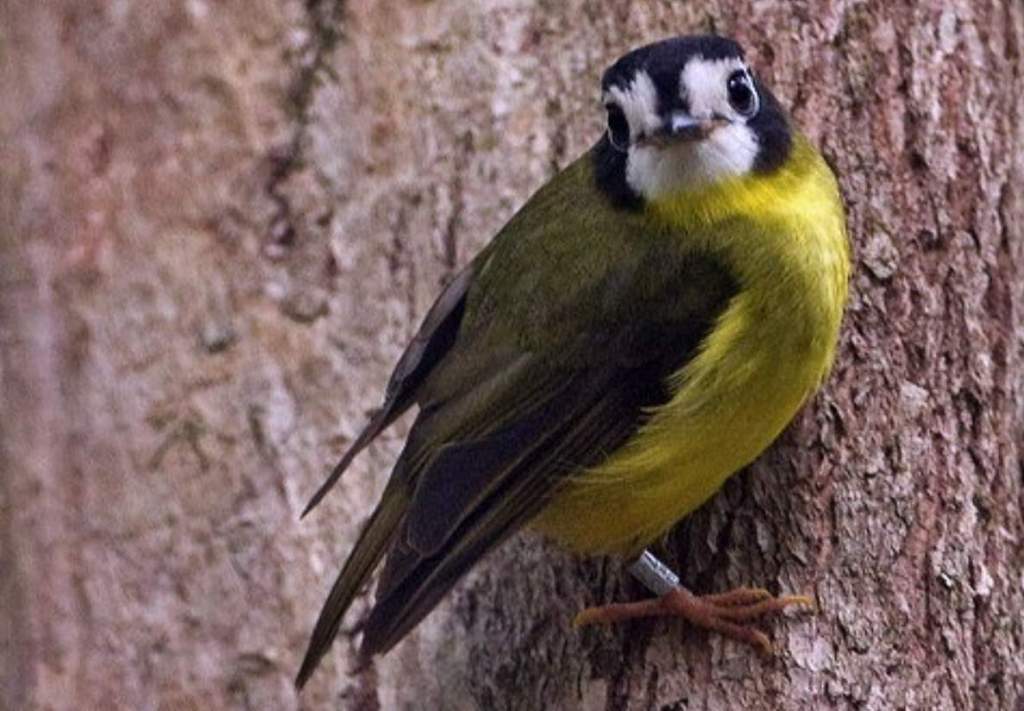Well, like the Pale-Yellow Robin, the White-faced Robin (Tregellasia leucops) is confined to rainforest and forages within its mid and lower stages. The bird belongs to family Petroicidae and it is also known as White-throated Robin.
The White-faced Robin is a sedentary bird, established pairs keeping to much the same territory year-round although often gathering with their young of the year and perhaps neighbors in loose feeding groups of four or five. They hunt by perch-and-pounce, sitting motionless and often sideways on vertical saplings and branches and then diving to the ground, low foliage and trunks to pick off insects of various kinds. The size of white-faced robin is around 120-130 mm long.

Both sexes are similar. Face, around eye to chin white, circled broadly black from below cheeks, behind eye to forehead. Crown is dusky olive; rest of upper parts are deep olive. Wings and tail are duskier, the feathers edged olive. Underparts are rich yellow, washed olive on sides of breast. Eyes are black-brown. Bill is black, with pale buff base to lower mandible. Feet are rich grayish yellow. The immature bird is little duller. Juveniles plain rich cinnamon-brown above and over breast, paler below; juvenile plumage molts out within a month or so of fledgling. The young are similar to Pale-yellow Robin.

Nesting and breeding period not established, probably August-January. Nest a deep cup of bark and plant fiber, bound with cobweb, and decorated outside with camouflaging pieces of lichen, bark and moss; lined with finer fiber; placed low in vertical fork or rattan Calamus to two to three meters high. This beautiful robin lays usually two eggs, which are pale blue-green, freckled with dull red, chestnut and grey, concentrated at larger end; oval, about the size of 19 x 14 mm.
As far as distribution concerned it is found in tropical rain forests of coastal Cape York Peninsula south to Mcllwraith Range. Also, Trans-Fly and hill rain forests of New Guinea. About nine races; one endemic to Australia.
Read More – Western Yellow Robin (Eopsaltria griseogularis)







